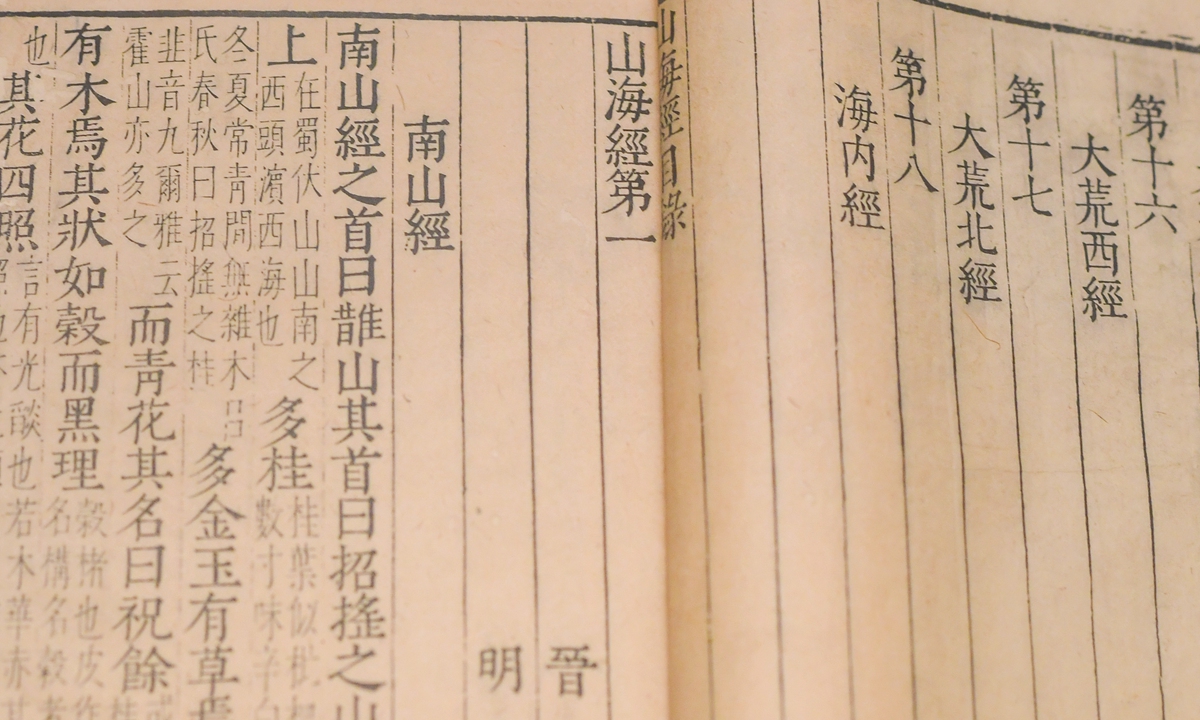ARTS / CULTURE & LEISURE
China in Ancient Books

A copy of Shan Hai Jing on display at the National Museum of China in Beijing Photo: IC
'Classic of Mountains and Rivers'(I):World's first encyclopedia of peculiarities
The Classic of Mountains and Rivers, or Shan Hai Jing, is an ancient Chinese classic encompassing legends, geography, history, astronomy, animals, plants, medicine, religion, anthropology, oceanography and other subjects, leading it to be regarded as an encyclopedia in ancient China.
Up till now, no one actually knows when the Classic of Mountains and Rivers was completed. The earliest record of the book can be found in the Records of the Grand Historian in the chapter "Biography of Dayuan" by Han Dynasty (206BC-AD220) historian Sima Qian, but no information about the author was given. Modern scholars generally believe that the book originated from folk tales that had been passed down orally and were written down between the Warring States Period (475BC-221BC) and the Han Dynasty, and had been continuously revised even after its completion.
In ancient times, the Classic of Mountains and Rivers was seen as a book on geography. With 18 volumes and 31,000 characters, it is mainly composed of two parts - the Classic of Mountains (five volumes) and the Classic of Rivers (eight volumes), which mainly record the geography and mineral resources, plants and animals of more than 100 states, 550 mountains and 300 waterways. Each of them is further differentiated into two more sections: The former consists of the Wu Zang Shan Jing (Classic of Mountains in Five Directions), and Hai Wai Jing (Classic of Overseas Anomalies), while the latter contains the Hai Nei Jing (Classic of Domestic Anomalies), and the Da Huang Jing (Classic of Kings and Gods), which details many legends.
Specifically, the book systematically describes the geographical conditions before the Qin Dynasty (221BC-206BC), including mountains, rivers, lakes, wetlands, deserts and their changes, as well as the distribution of wild plants and ethnic tribes. The book also depicts many odd animals and their features, habitats and even sounds as well as their migration patterns, evolution and extinction.
Unfortunately, many of these animals are extinct today except for some endangered species such as panda and the Yangtze alligator.
The book also gives a detailed account of pharmacology, herbal medicines and disease symptoms, as well as agricultural activities.
In terms of astronomy, it records the movements of the sun, the moon and the stars, combining these with legendary stories.
Global Times



